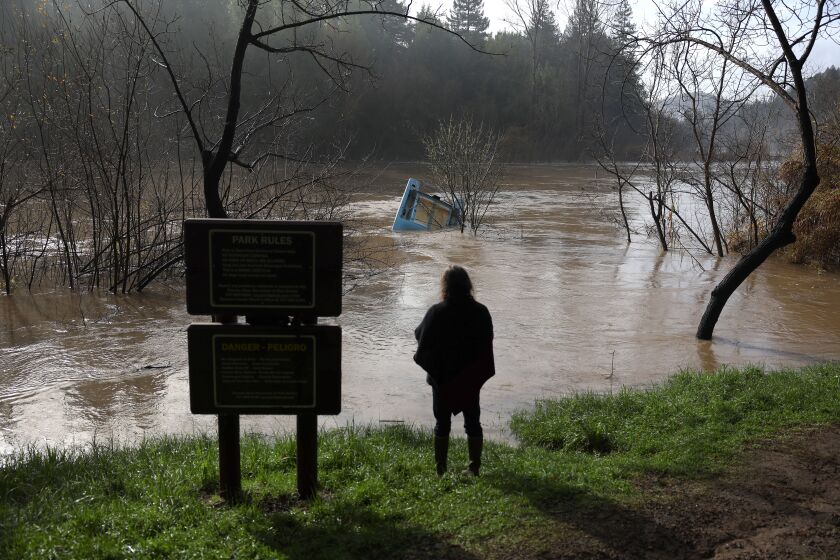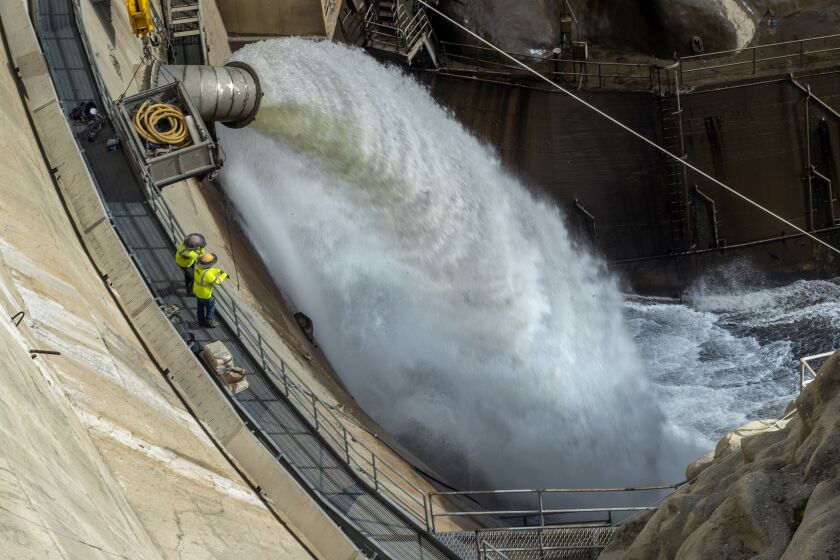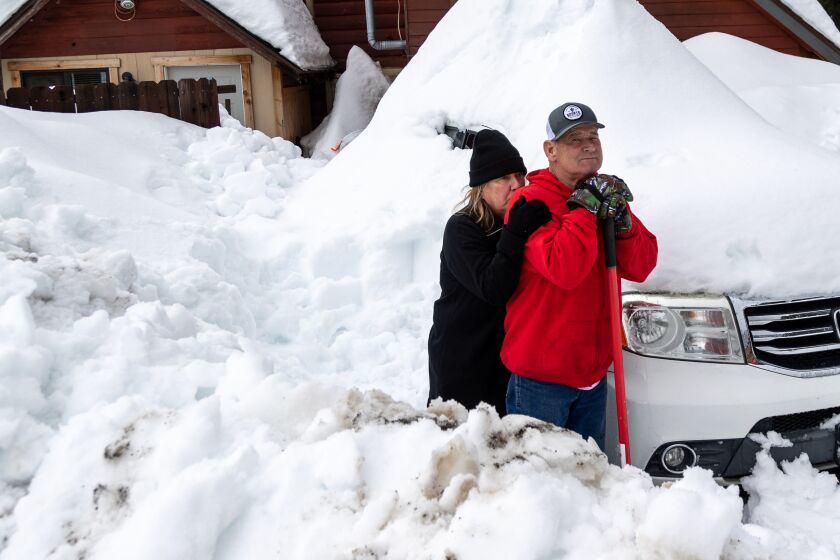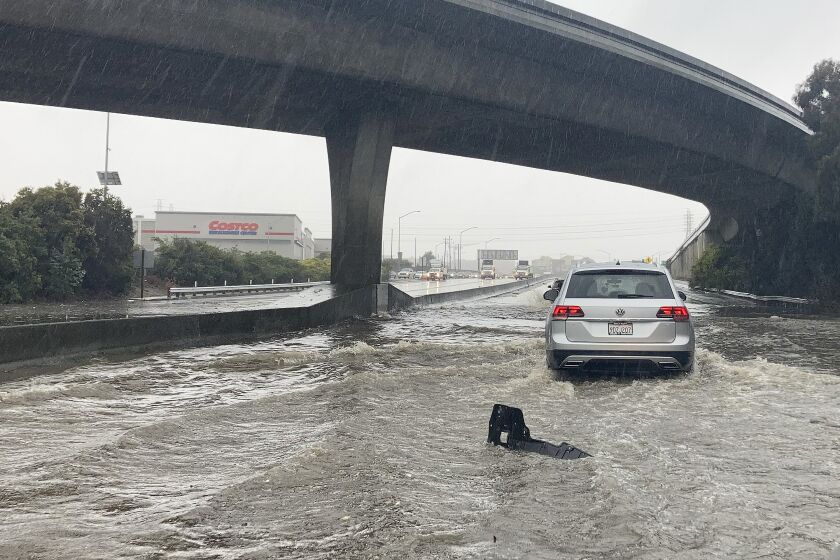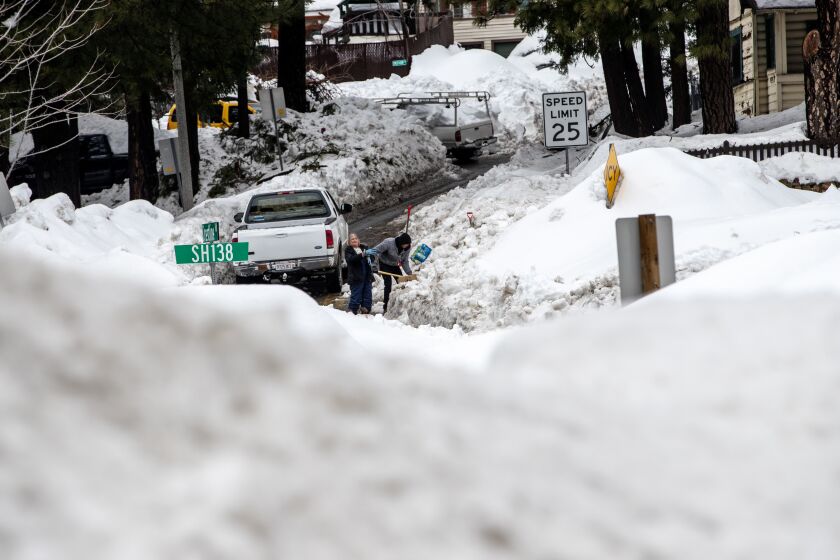Dangerous storm moves in as many parts of California brace for flooding
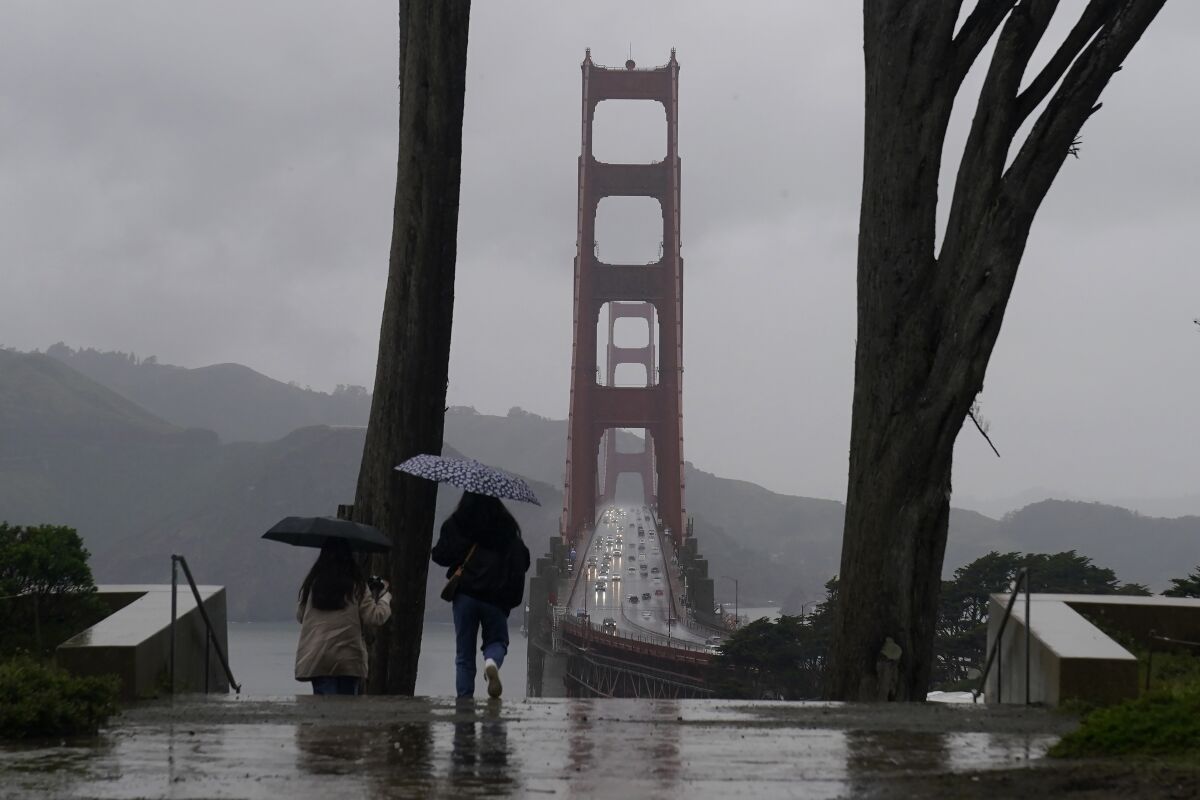
The first of two atmospheric river storms descended Friday on California, prompting widespread evacuation orders as it flooded creeks and rivers and dropped warm, heavy rains atop the state’s near-record snowpack.
Gov. Gavin Newsom requested an emergency declaration from President Biden, which would authorize federal support for state and local responses to the storm.
Newsom on Thursday proclaimed a state of emergency in 21 counties, activating the California National Guard and other state agencies to respond to storm-related emergencies.
“California is deploying every tool we have to protect communities from the relentless and deadly storms battering our state,” Newsom said. “In these dangerous and challenging conditions, it is crucial that Californians remain vigilant and follow all guidance from local emergency responders.”
As yet another atmospheric river barrels toward California, residents brace for the threat of engorged rivers and overtopped reservoirs.
California has already been battered by a series of cold storms this year, and officials fear this warmer system could melt snow and cause rivers to swell.
Northern California saw steady rain overnight, with showers expected to continue through the day. Flash flood watches are in effect in a swath of the region as well as parts of the Central Valley and Central Coast.
The threat won’t ease when this storm moves out this weekend. Another atmospheric river is expected to follow early next week, and there is a potential for a third around March 19, according to state climatologist Mike Anderson.
As yet another series of storms were forecast to hit California, state and federal officials outlined their preparations for flood control Thursday.
According to the National Weather Service, some of the highest flood risk will be in coastal areas from Salinas to San Luis Obispo, and throughout the Central Valley.
Officials in Fresno, Madera, Modesto and Santa Cruz counties have issued evacuation warnings for some communities due to likely flooding. San Luis Obispo County, which saw significant flooding during the January storms, has the “potential for similar impacts” from the incoming system, the weather service said.
In the Merced County town of Planada, officials went door to door to many homes Wednesday and Thursday to warn of possible disaster. The town was almost entirely flooded after a levee broke in January.
“People are full of fear,” County Supervisor Rodrigo Espinosa said from his car as he returned from watching crews lay sandbags at nearby Bear Creek. He hoped that the sandbags, debris clearance and other infrastructure improvements would prevent a worst-case scenario.
California will be hit by another atmospheric river this week, but this one will be warm instead of cold, raising concerns about potential flooding.
At least seven rivers are forecast to overflow from the incoming “Pineapple Express” storm, which is expected to drop warm, heavy, snow-melting rain as it moves from the Central Coast toward the southern Sierra into Saturday.
Among them are rivers that flooded at the start of the year, when nine atmospheric river storms pummeled the state. The waterways include the Cosumnes River near Sacramento, where more than a dozen levee breaches sent floodwaters onto roadways and low-lying areas, trapping drivers and contributing to at least three deaths along Highway 99.
The incoming storm will fall atop soaked soils and some of the deepest snowpack California has recorded. Both can exacerbate the potential for runoff and erosion.
In high-elevation areas, the biggest threat from the storm will probably be structural damage as rain makes the snowpack even heavier, UCLA climate scientist Daniel Swain said during a briefing. The state has seen a spate of roof collapses from heavy snow, including a grocery store providing crucial supplies in Crestline.
“There really will be significant melting of the snowpack — which is substantial at those elevations — as heavy rain falls into it,” Swain said. “But really, the main flood threat is coming from the fact that the storm is just going to bring a significant amount of rainfall in its own right.”
When an evacuation order reaches you, you need to leave. Now. Here’s how to prepare and what to have ready to go if you may need to evacuate during the rainstorms hitting California.
The stories shaping California
Get up to speed with our Essential California newsletter, sent six days a week.
You may occasionally receive promotional content from the Los Angeles Times.
